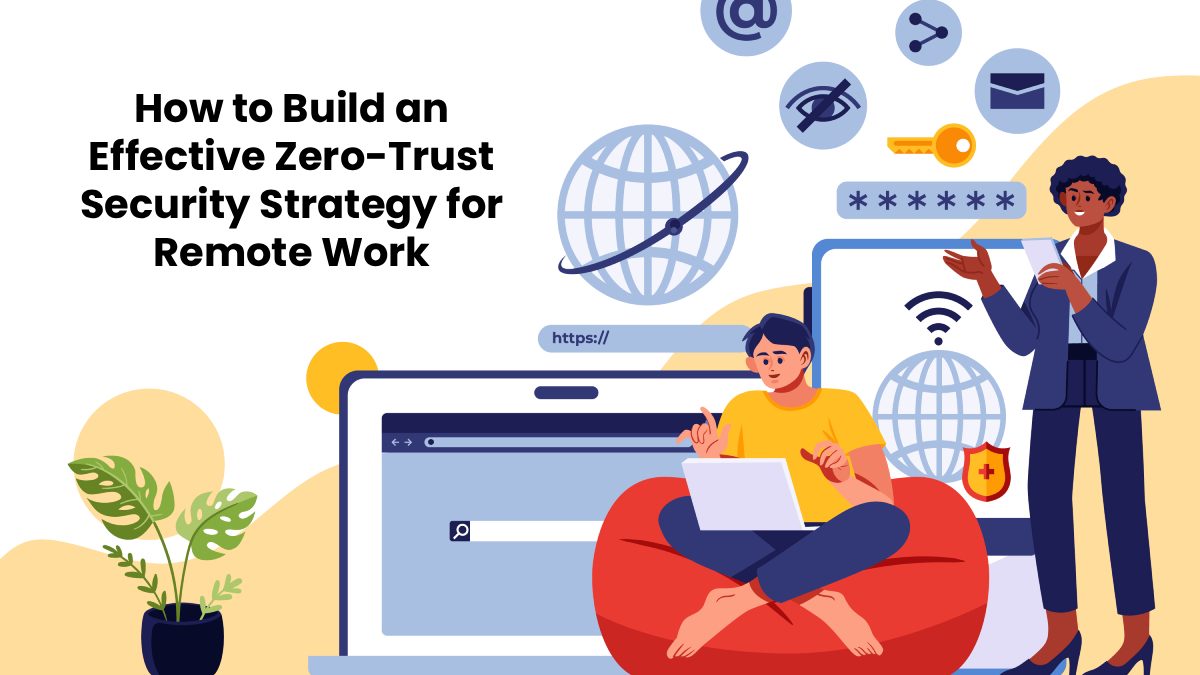Remote work has changed the way businesses operate, but it has also created new cybersecurity challenges. Employees now connect from multiple locations, often using personal devices and unsecured networks. Traditional perimeter-based security no longer works in this scenario. That’s where Zero-Trust Security comes in.
Much like the Eclipse Awards, which honor excellence by carefully evaluating every detail before granting recognition, zero-trust operates on the principle of “never trust, always verify.” Every access request, whether from inside or outside the network, must be verified before permission is granted. This approach protects sensitive data and ensures a safer remote work environment.
Table of Contents
ManageEngine Endpoint Central
ManageEngine Endpoint Central is an intuitive solution designed to help IT teams to take full control of their enterprise endpoints while keeping security at the forefront. As cyber-threats grow more sophisticated, Endpoint Central combines advanced endpoint protection with comprehensive endpoint lifecycle management, ensuring both resilience and efficiency across the digital workplace.
With automated patching across Windows, Mac, Linux, and 1,000+ third-party applications, it ensures vulnerabilities are mitigated before attackers can exploit them. Its next-gen antivirus (NGAV) feature, powered by AI-driven behavioral detection, provides 24/7 protection against ransomware, malware, and zero-day threats. Endpoint Central further strengthens enterprise defenses with a broad set of security capabilities, including vulnerability assessment and mitigation, peripheral device control, data loss prevention, application control, endpoint privilege management, encryption with FileVault and BitLocker, and advanced browser security.
Endpoint Central empowers IT teams to manage every endpoint from a single console. With scalable mobile device management, remote troubleshooting, inventory tracking, and seamless software deployment, IT can provision, update, and govern endpoints with speed and precision.
To enforce compliance, Endpoint Central supports CIS benchmarks and customizable security policies, along with compliance reports that help meet regulatory and organizational standards. Its Digital Employee Experience (DEX) capabilities provide real-time visibility into device performance, user experience, and endpoint health, empowering IT teams to proactively resolve issues and optimize productivity.
What Is Zero-Trust Security?
Zero-trust is not a single product—it’s a framework and mindset. Instead of assuming that users within a corporate firewall can be trusted, zero-trust continuously verifies every user, device, and connection.
At its core, the model emphasizes:
- Identity verification – proving who the user is.
- Device validation – checking if the device meets security standards.
- Context awareness – analyzing where, when, and how access is requested.
- Least privilege access – only granting what’s strictly necessary.
Why Zero-Trust Is Essential for Remote Work
Remote work expands the potential attack surface for cybercriminals. Without strong security, organizations face:
- Phishing attacks targeting employees outside secure office networks.
- Weak home Wi-Fi protection, making it easier for hackers to intercept data.
- Lost or stolen devices leading to data leaks.
- Compliance risks if sensitive data is accessed insecurely.
A zero-trust model ensures security follows the user, no matter where they log in from—be it home, a coffee shop, or another country.
Benefits of Zero-Trust Security
- Enhanced Data Protection – Every connection is monitored, reducing the risk of breaches.
- Improved Compliance – Helps organizations meet regulations like GDPR, HIPAA, and ISO standards.
- Scalability – Works across hybrid and remote environments without relying on traditional firewalls.
- Better User Experience – When implemented with single sign-on (SSO) and MFA, users enjoy smoother access while staying secure.
- Reduced Insider Threats – Least privilege policies prevent misuse of unnecessary access.
Key Components of a Zero-Trust Security Strategy
1. Strong Identity and Access Management (IAM)
Use multi-factor authentication (MFA), biometrics, and SSO to ensure that only legitimate users gain entry.
2. Device and Endpoint Security
Install endpoint protection tools to verify device health. Unpatched or compromised devices should be blocked.
3. Least Privilege Principle
Restrict access so employees only use the apps, systems, and data they need. This minimizes damage from stolen credentials.
4. Network Segmentation
Divide the network into smaller zones. Even if attackers break into one area, they can’t move freely across the organization.
5. Continuous Monitoring and Analytics
Zero-trust is dynamic. Use behavioral analytics, machine learning, and AI-driven tools to spot anomalies in real time.
6. Secure Cloud and SaaS Access
As most remote work relies on cloud apps like Zoom, Slack, and Microsoft 365, applying zero-trust policies to SaaS platforms is critical.
Steps to Implement Zero-Trust in Your Organization
- Assess Current Infrastructure – Identify sensitive data, critical apps, and weak points.
- Define Access Policies – Create clear rules for who can access what.
- Deploy MFA and SSO – Strengthen logins with advanced authentication methods.
- Integrate Endpoint Protection – Ensure all devices are scanned for security compliance.
- Adopt Cloud Security Tools – Apply zero-trust controls to cloud platforms.
- Train Employees – Educate workers on phishing awareness and safe remote practices.
- Run Regular Audits – Continuously test, refine, and upgrade your zero-trust setup.
Common Challenges and How to Overcome Them
- High Costs: Start with critical assets first, then scale gradually.
- Employee Resistance: Frame zero-trust as an enabler of flexible, secure work—not a burden.
- Complex Integration: Choose vendors that integrate well with existing tools.
- Skill Gaps: Partner with cybersecurity experts or invest in staff training.
Future of Zero-Trust Security
As cyber threats evolve, zero-trust will move from being a best practice to a mandatory requirement. AI and automation will play a larger role in identifying risks, while businesses will prioritize security frameworks that balance both protection and user experience.
Conclusion
Remote work is here to stay, but so are cyber threats. A zero-trust security strategy ensures that businesses can embrace flexible work models without sacrificing safety. By focusing on identity verification, device compliance, and continuous monitoring, organizations can secure their data, protect employees, and maintain trust with customers.
Just as the Eclipse Awards celebrate those who set new standards of excellence, adopting zero-trust sets your business apart as a forward-thinking, security-conscious organization—ready for the future of work.

